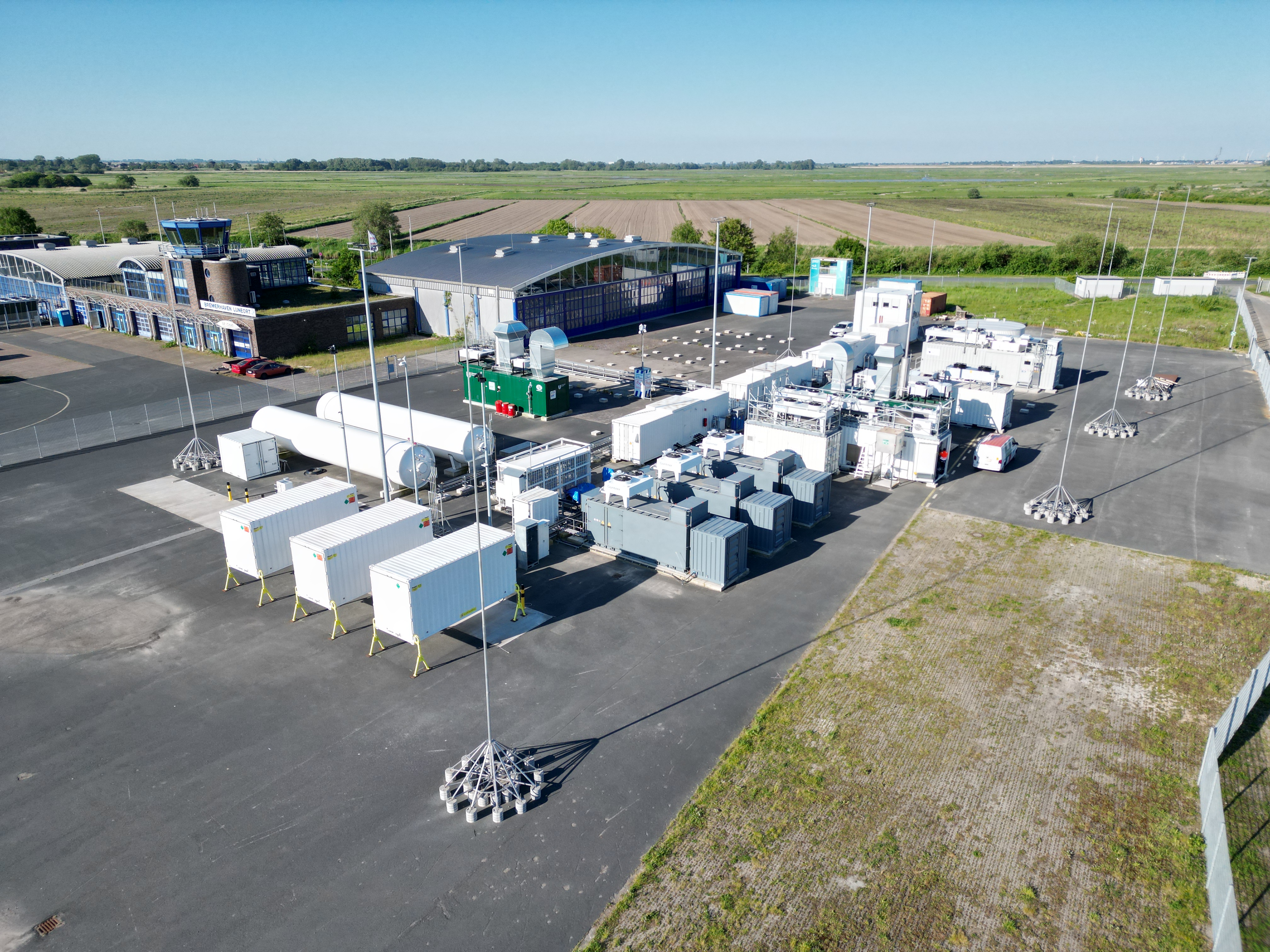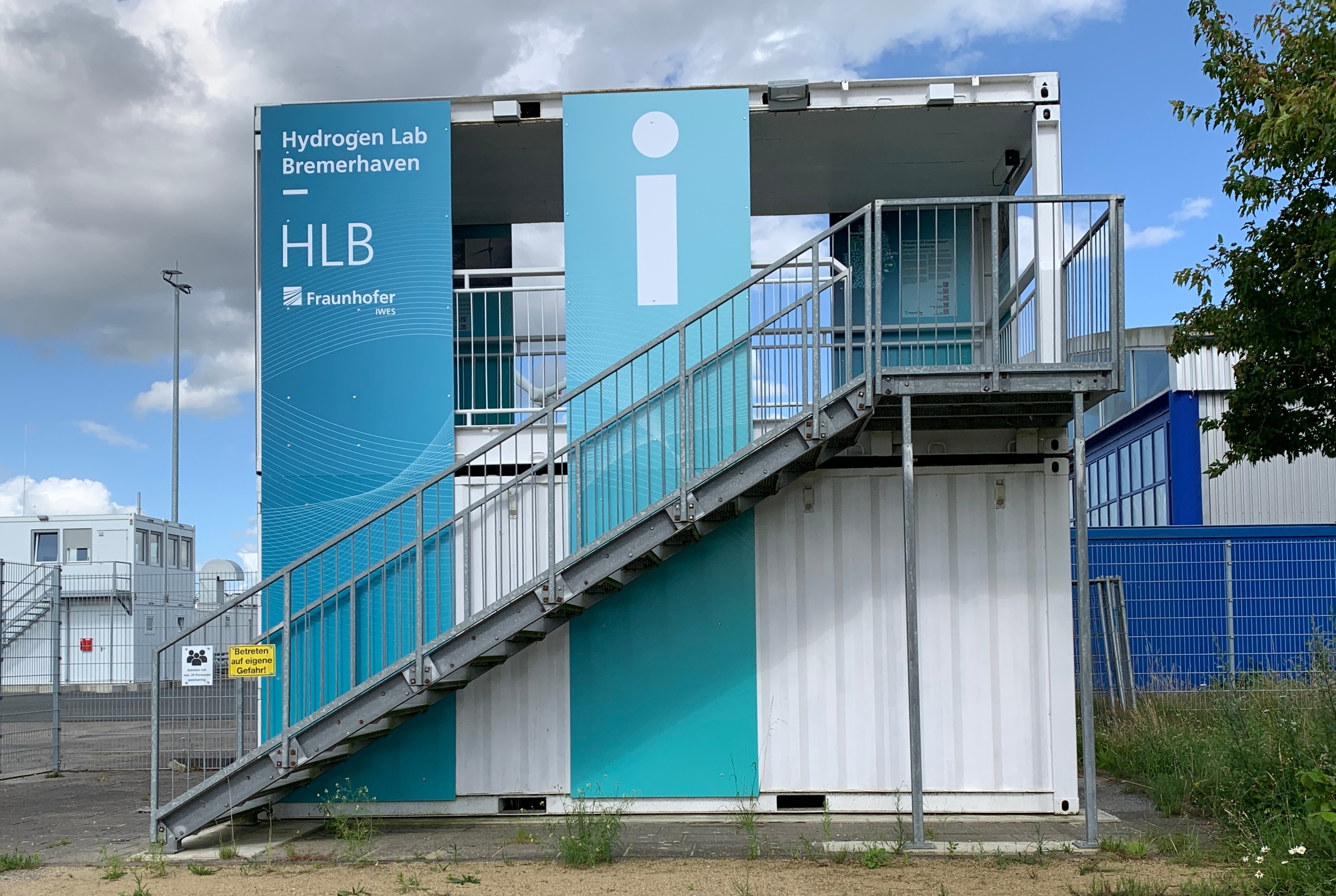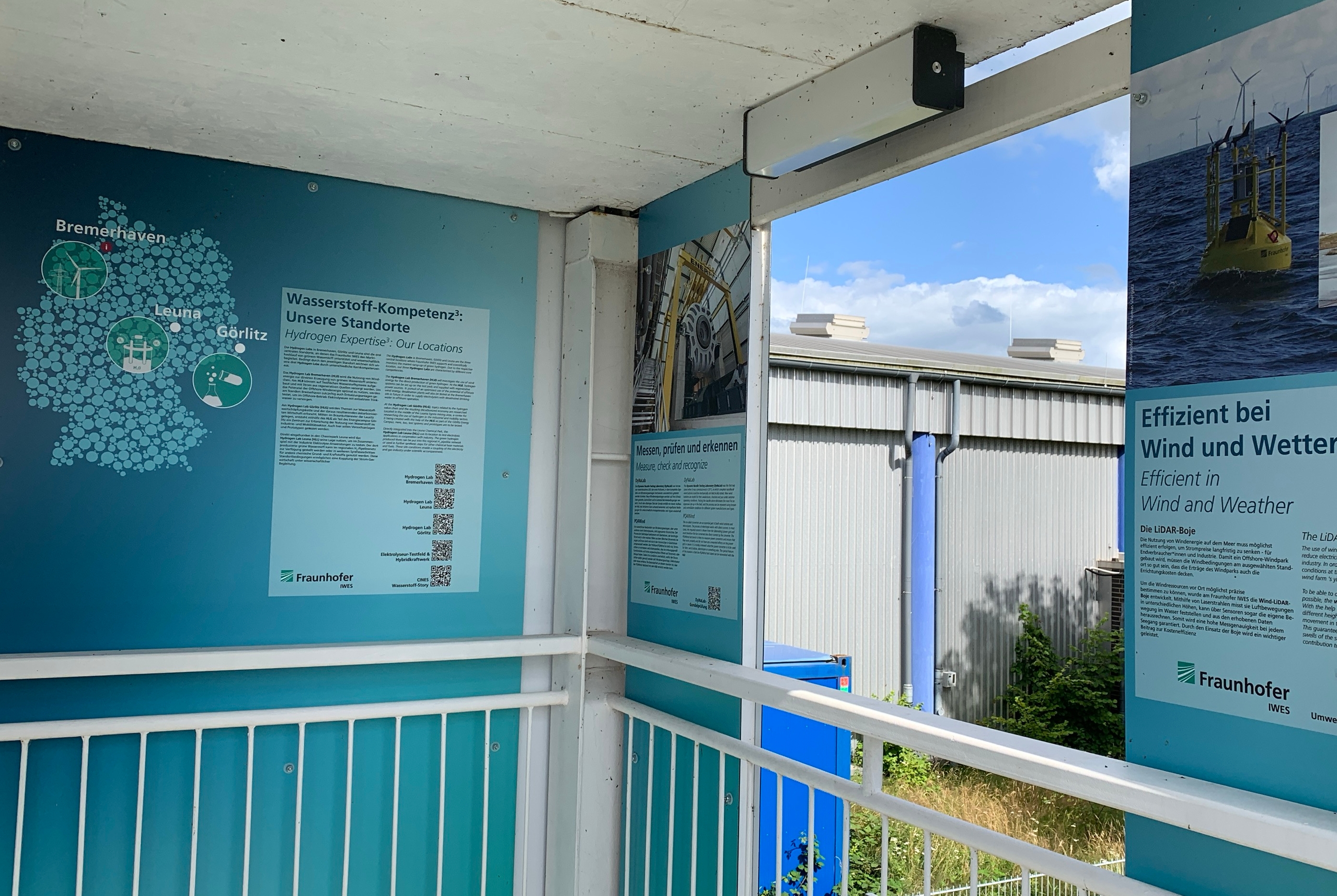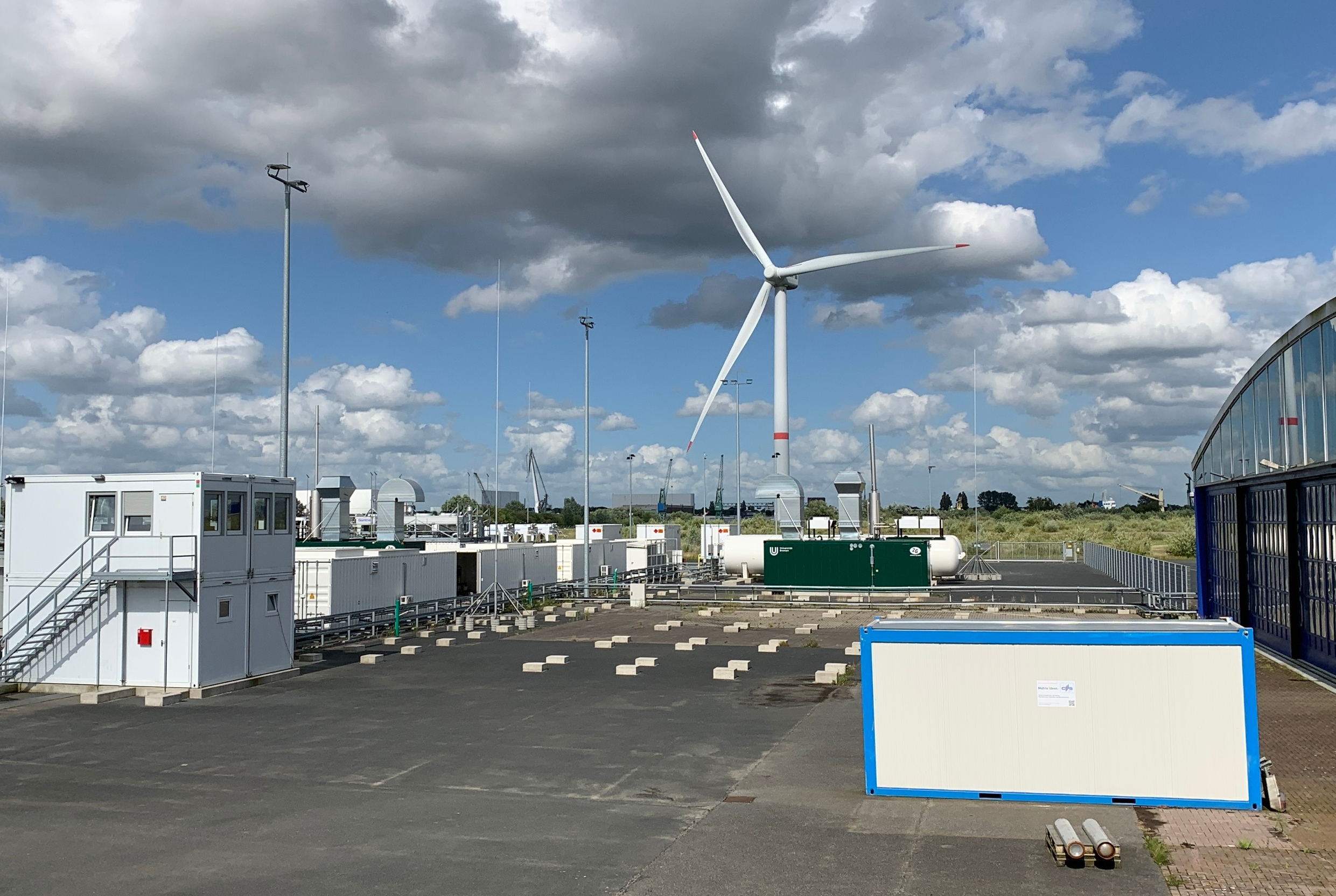Focus on challenge of offshore production
At the Hydrogen Lab Bremerhaven (HLB), the focus is on the interaction of wind turbines with electrolytic hydrogen production. The increasing decentralization of power generation resulting from the integration of renewable energy sources places high demands on power grids, which have been designed for the parallel operation of centralized large generators until now. In the context of offshore wind farms in particular, the development, assessment, and operation of which are among Fraunhofer IWES’ key competences, there is a considerable need for optimization in order to ensure the security of supply. Direct onshore and offshore production of green hydrogen has a high potential to increase the security of supply in decentralized power grids by smoothing out supply and demand peaks by means of the generation and reconversion of H2.
When the HLB, which is being funded by the State of Bremen and the EU, is completed in 2023, this very approach will be tested there on ten test areas equipped with electrolyzers with a total capacity of up to 10 MW, which will be supplied with electricity by an 8 MW wind turbine installed on site among other sources in the future. The electrical properties of electrolyzers in interaction with the fluctuating power feed from wind energy can be investigated on PEM and alkaline electrolyzers in order to gain insight into how electrolyzers and their power electronics need to be constructed so as to have a stabilizing effect on the grid and to structure the power grid reliably and flexibly in the future.
The electrolyzers are connected to the virtual 44 MVA medium-voltage network at the Dynamic Nacelle Testing Laboratory (DyNaLab), the leading facility for wind turbine grid integration tests, in order to simulate real-world operation. The areas for the test operation of electrolyzers will be available for use by interested industrial companies, allowing a wide range of issues to be investigated.
The HLB will additionally focus on the integration of hydrogen production, storage, and use with the aim of developing a local hydrogen economy. As such, not only will there be H2 gas tanks and fuel cells on site, but local project partners will also investigate the use of H2 in the food industry as well as the production of synthetic natural gas (SNG) and methanization processes.



